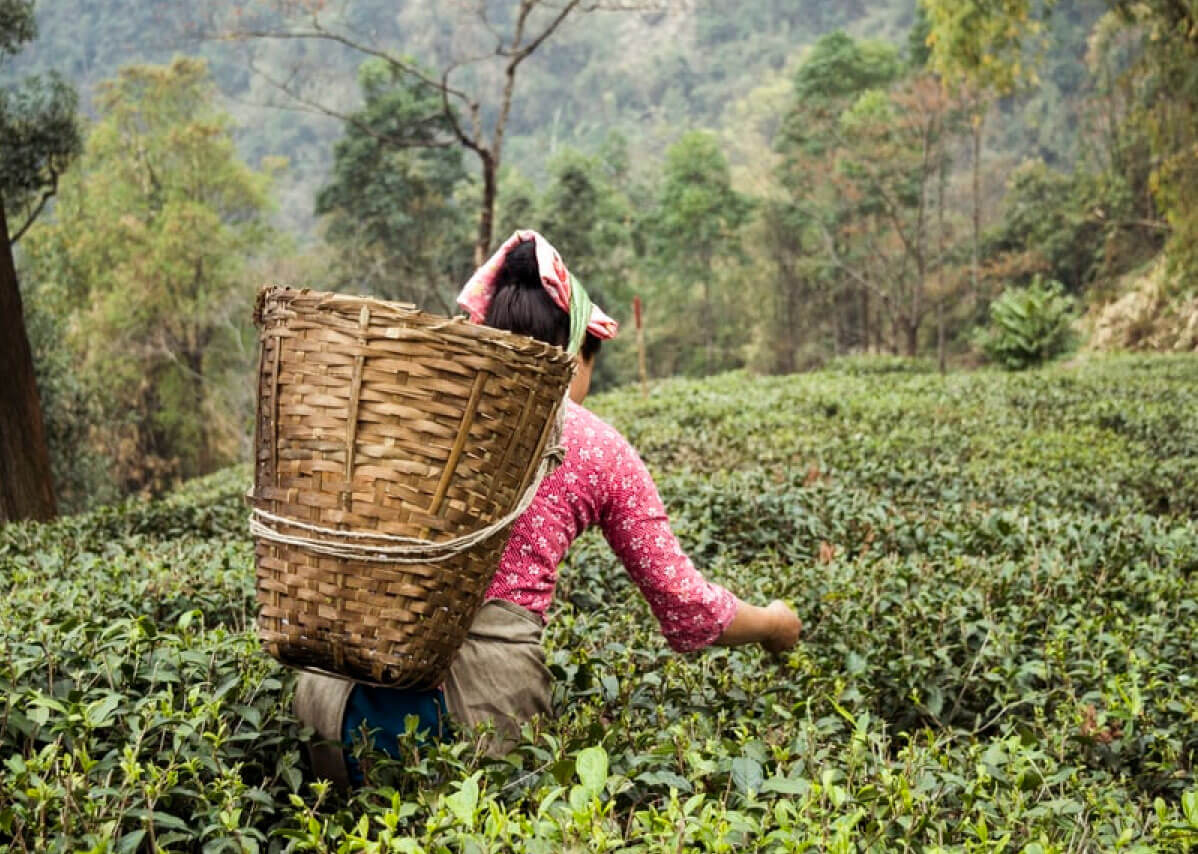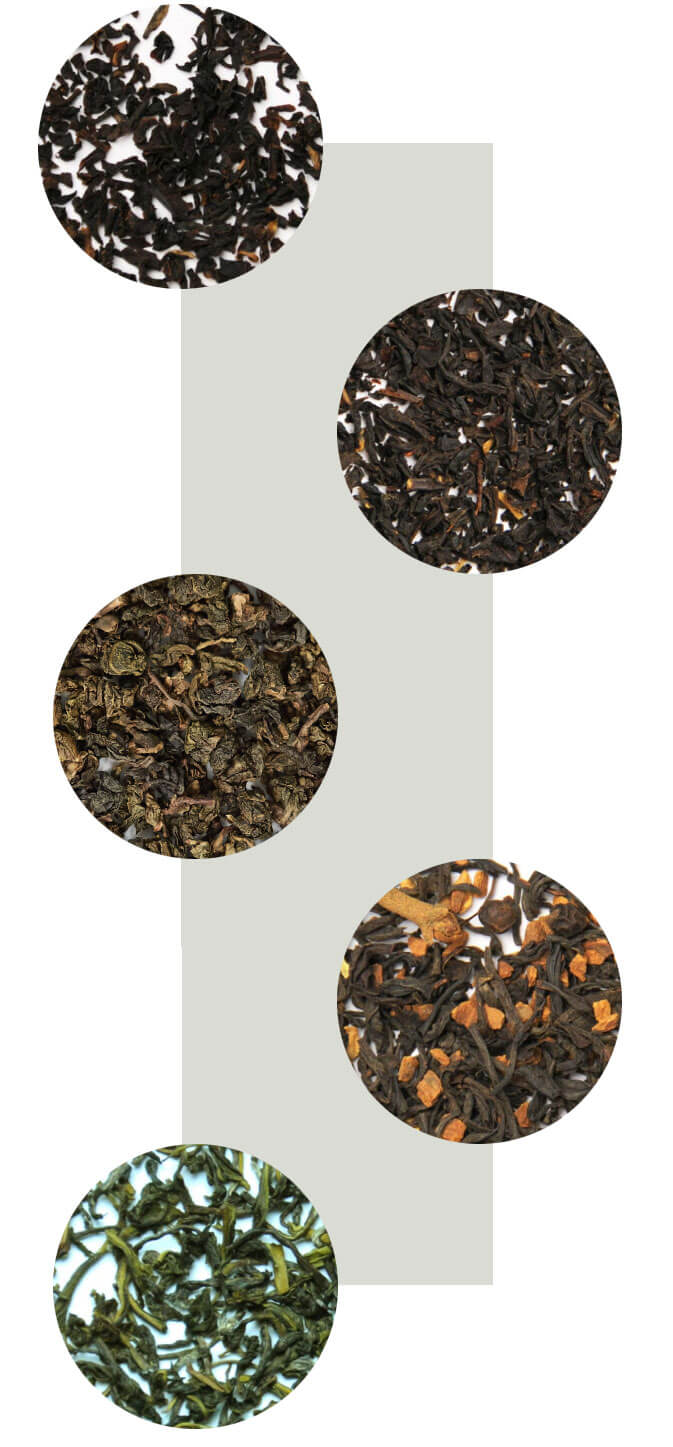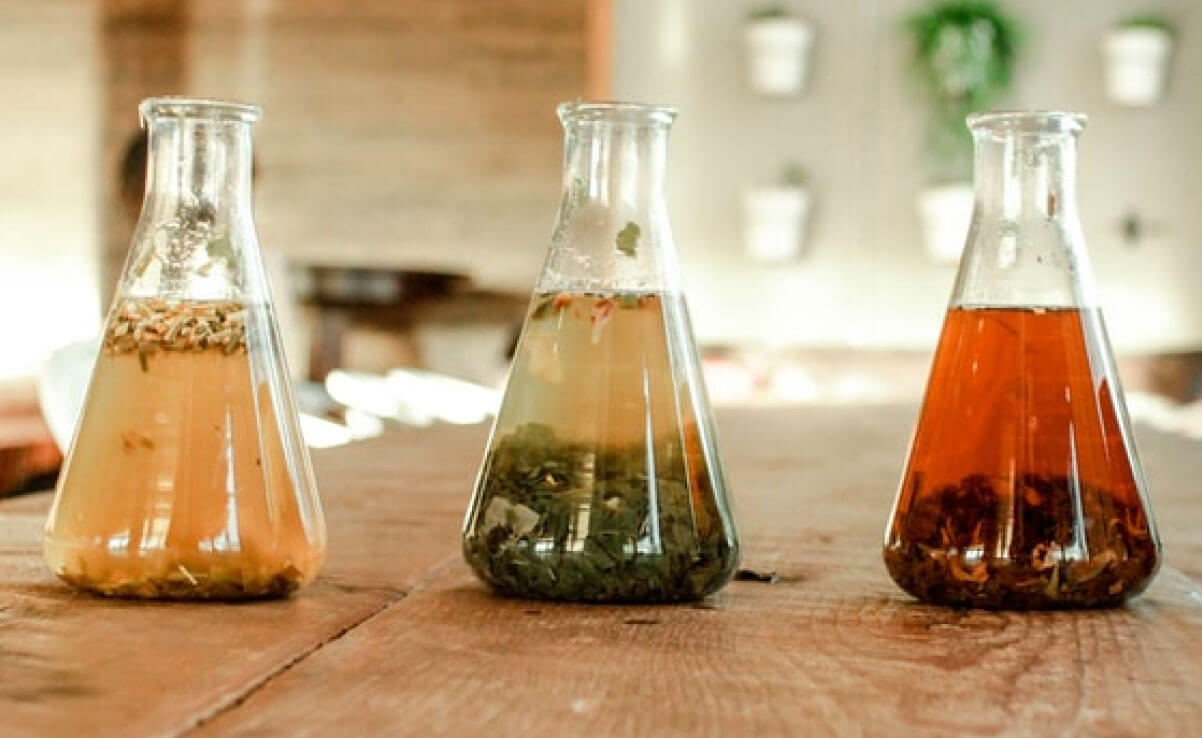The tea bush (Camellia sinensis) is the cultivated form of an evergreen tree with dark, shiny leaves. All tea plants worldwide belong to the same species, but two main varieties are distinguished called China tea/Sinensis and Assam tea/Assamica.
Sinensis is mainly cultivated in China, Japan and Taiwan, while Assamica is cultivated in the rest of Asia as well as in Africa and South America.
Cultivation of tea
A large number of factors determine the taste and appearance of the finished tea - primarily the nature of the soil and the local climate. The taste and aroma of the tea, even from the same plantation, changes from picking to picking throughout the harvest season - depending on the climatic conditions. This is expressed, for example, in First Flush Darjeeling, which differs markedly in terms of taste from the season's other pickings.
The treatment that follows the picking of tea leaves determines whether the tea will be green, black or something in between. When making green tea, the tea leaves are treated very gently. The only treatment is steaming, possibly comminution and then drying. The taste is clear, clean and an indispensable complement to a Chinese or Japanese meal.

Aroma te
Aroma tea is a plantation tea that has been flavored with fruit oils, fruit pieces and/or flowers. The plantation tea, which is used as a base in the mixture, has great importance for the taste of the finished aroma tea.
Oolong tea
An oolong tea is a cross between green and black tea. After the tea harvest, the oxidation process is started (as when producing black tea), but this is interrupted shortly after by drying the leaves. This makes for wonderful teas that have the lightness of green tea and the fullness of black tea.
White tea
The production method for white tea is limited to an extremely gentle drying of the freshly picked tops, which evaporates the leaves' natural moisture. As many of the natural ingredients as possible are preserved in white tea, which must therefore be prepared at a low temperature so that you get maximum enjoyment from them.
Rooibos tea
Rooibos does not come from the tea plant, but from the needles of a South African bush. The drink is completely without tannic acid/tannin and tein. Therefore, it can be drunk by everyone. Rooibos makes a very tasty, reddish cup of 'tea' and can be enjoyed both cold and warm
Herbal tea
Herbal teas are generally free of tannic acid/tannin and tein as they do not contain tea leaves. They are also suitable as iced tea - simply put the cold tea in the fridge and serve it later with ice cubes, a leaf of fresh mint and possibly a lemon slice and or sugar to taste.


POLYPHENOLS OR TANNINS
Tea contains a group of polymerized phenols, typically catechin. The group is often collectively called Theaflavin, and it is the one that causes the reddish-brown color in black tea. Theaflavin is not found in green tea, but is formed during the oxidation process.
TANNING ACID
When we talk about tannic acid in tea, we mean the tea's content of polyphenols or tannins. The chemical itself, tannic acid, is not found in tea.
THEANINE
An amino acid specific to tea. It is oxidized to other substances during oxidation and is therefore found especially in green tea.
TEIN
An alkaloid that i.a. also found in coffee, kola nut and guarana and stimulates the central nervous system. Tein is found in higher concentration in new tea leaves and leaf buds, so Gyokuro contains, for example, more thein than Lapsang Souchong. If you want to minimize the intake of thein, you can choose to drink tea with a lower content, such as green tea and tea from China or Rooibos and herbal teas, which do not contain thein at all.



















